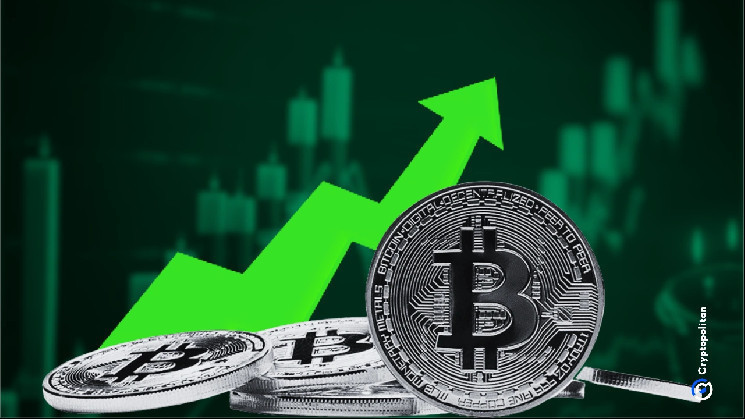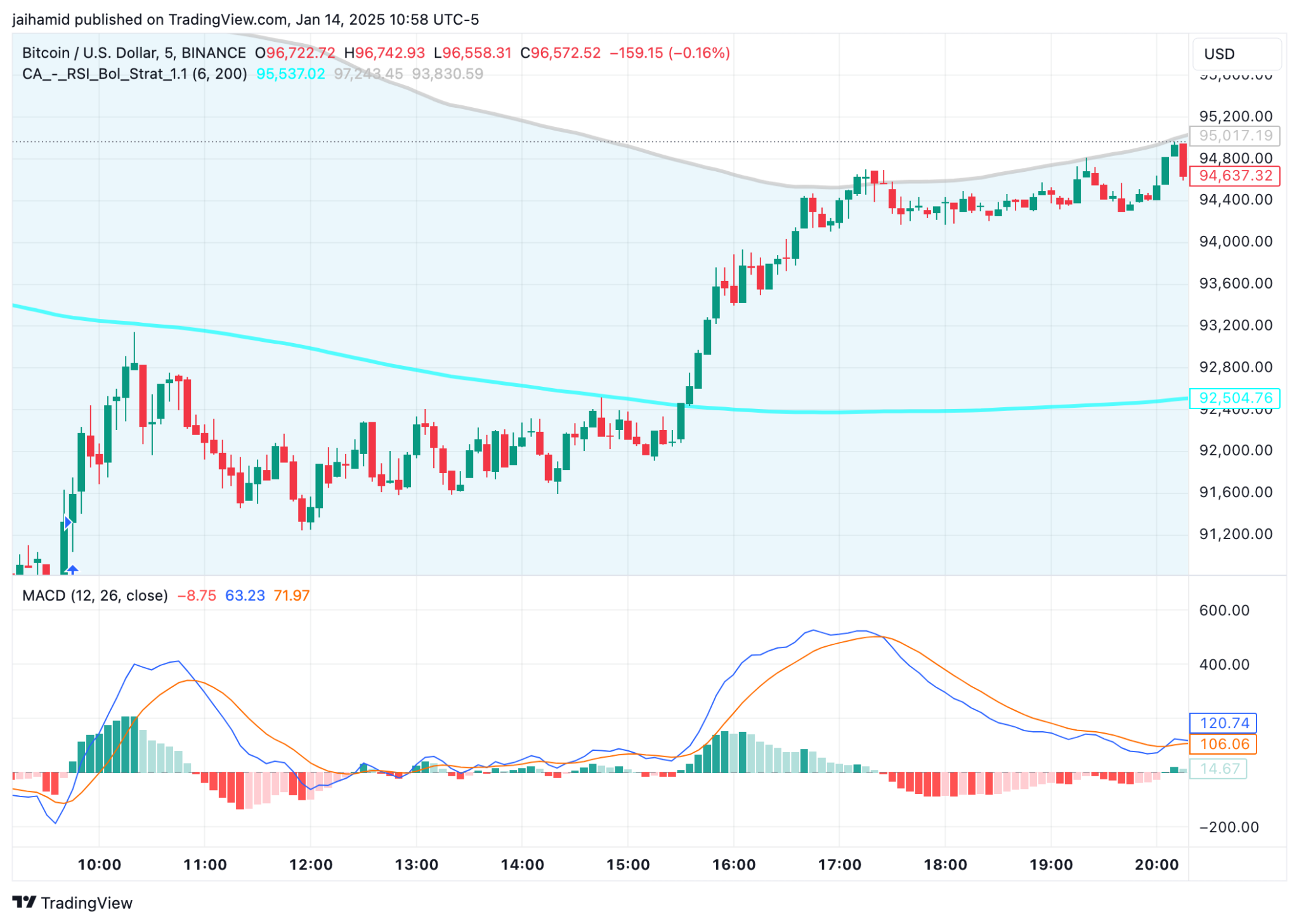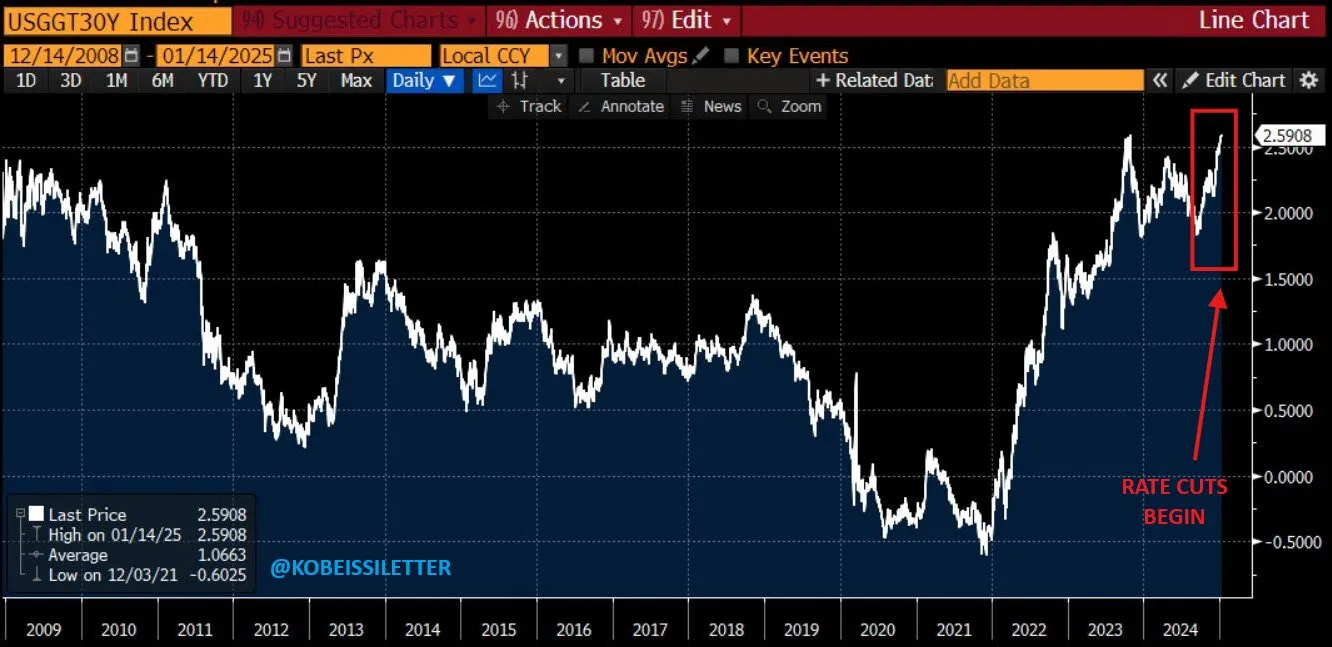
Bitcoin shot back to $97,044 on Tuesday, climbing 4.5% in a single day after plunging below $90,000 earlier in the week. The broader crypto market followed suit, with the CoinDesk 20 index rising 3.9%.
Traders scrambled to reposition after new inflation data pointed to a cooling economy, triggering a risk-on rally across both cryptos and equities.
Major crypto-adjacent stocks also rallied. Coinbase gained over 3%, while MicroStrategy added more than 5%. Mining companies like Mara Holdings and Core Scientific posted similar jumps, climbing roughly 5% as investors capitalized on the upward momentum.
Inflation numbers change sentiment
The Bureau of Labor Statistics revealed a 0.2% increase in the producer price index (PPI) for December, falling short of the 0.4% projection by economists surveyed by Dow Jones. Core CPI inflation also came in lower than expected at 3.5%, below the predicted 3.8%.
These lighter-than-anticipated inflation numbers ignited optimism among investors, driving demand for growth-oriented assets like Bitcoin. However, the bond market told a different story. The yield on the 10-year Treasury surged to 4.82%, its highest level in 14 months.
This rise defied expectations since softer inflation data typically signals fewer rate hikes or even potential rate cuts. Analysts were quick to dig deeper, pointing to several factors driving the bond market’s unusual reaction.
The U.S. government’s massive deficit spending is one major culprit. Total public debt hit a staggering $36.2 trillion in December, with $1 trillion added in just 105 days. Projections suggest the national debt could reach $40 trillion by February 2026.
Flooding the bond market with new debt has increased supply, dragging down bond prices and pushing yields higher. Uncertainty surrounding Donald Trump’s upcoming presidency has also added fuel to the fire. Tariff concerns have strengthened the U.S. dollar, putting pressure on Bitcoin.
Meanwhile, term premiums—essentially the extra compensation long-term investors demand for taking on risk—are at their highest levels since the pandemic, reflecting growing unease about the economic outlook.
Bitcoin traders ride the volatility
Last week, Bitcoin dropped sharply after stronger-than-expected payroll data sent bond yields soaring. Investors, spooked by rising yields and Trump’s proposed tariffs, fled risk assets in droves.
Despite the rollercoaster, Bitcoin is still up 3% year-to-date and remains a favorite among risk-hungry investors. Tom Lee of Fundstrat isn’t phased. Speaking on CNBC’s “Squawk Box,” he said, “Bitcoin could dip to $70,000 in the short term, but the long-term trajectory remains bullish. We could see it end the year somewhere between $200,000 and $250,000.”

Crypto traders are bracing for more chaos. January was expected to be rocky, but the market’s volatility could stretch through the first quarter as inflation data and fiscal policy continue to send mixed signals.
A closer look at bond yields provides more context for Bitcoin’s swings. Real yields on 30-year Treasuries—yields adjusted for inflation—have jumped more than 50 basis points since rate cuts began in Q3 2024.

Treasury Inflation-Protected Securities (TIPS) yields have climbed 40 basis points during the same period. While both have risen, the moves pale in comparison to the 117 basis-point surge in the 10-year Treasury yield since the Federal Reserve started easing rates.
Analysts are pointing to term premiums as the missing puzzle piece. The category, which captures risks unrelated to inflation or economic growth, has ballooned to decade-high levels. The US economy might be in trouble.
Land a High-Paying Web3 Job in 90 Days: The Ultimate Roadmap
